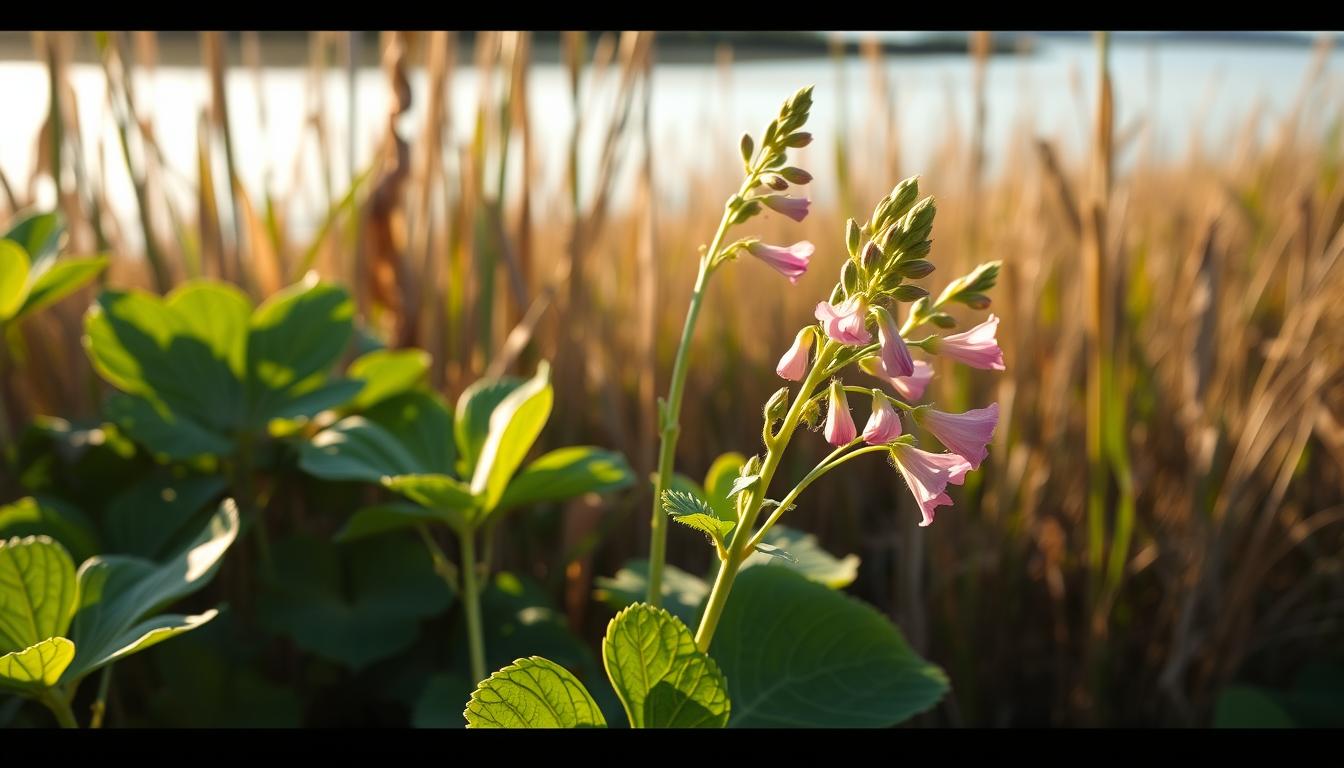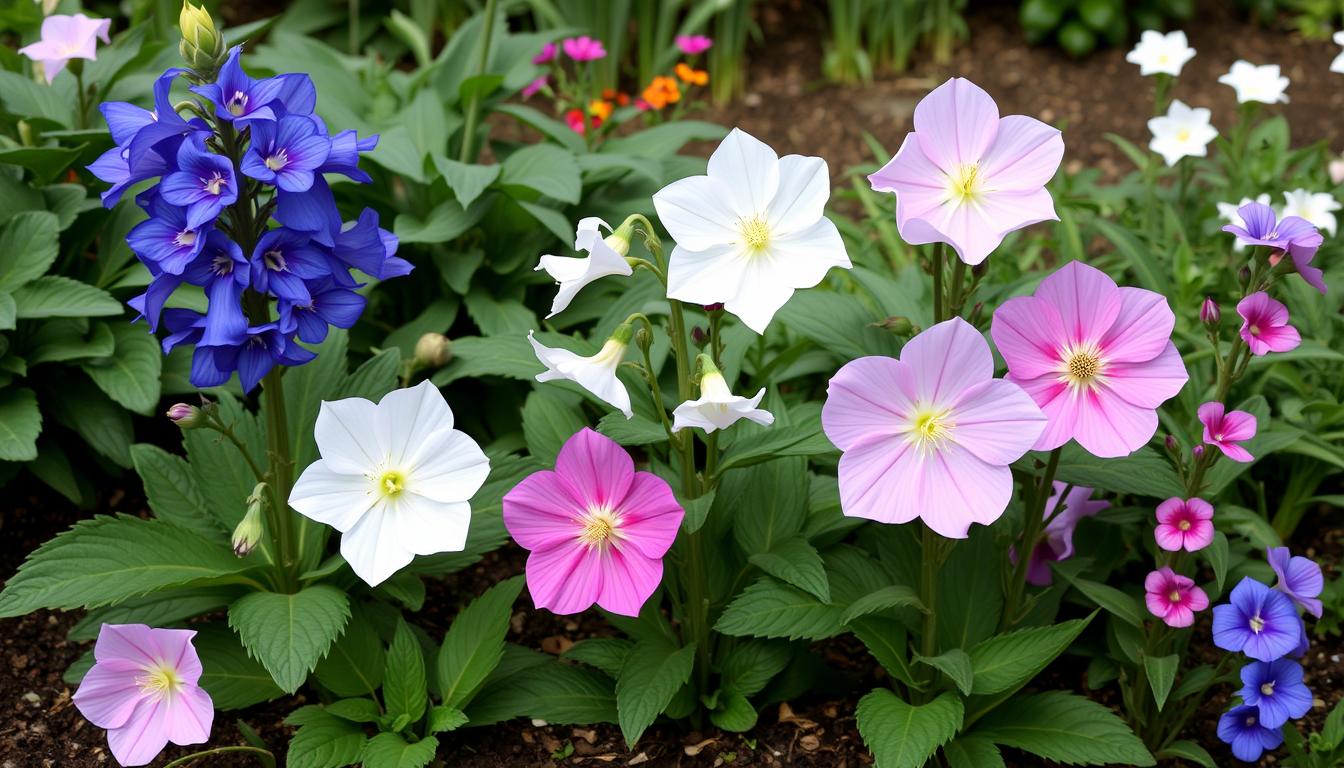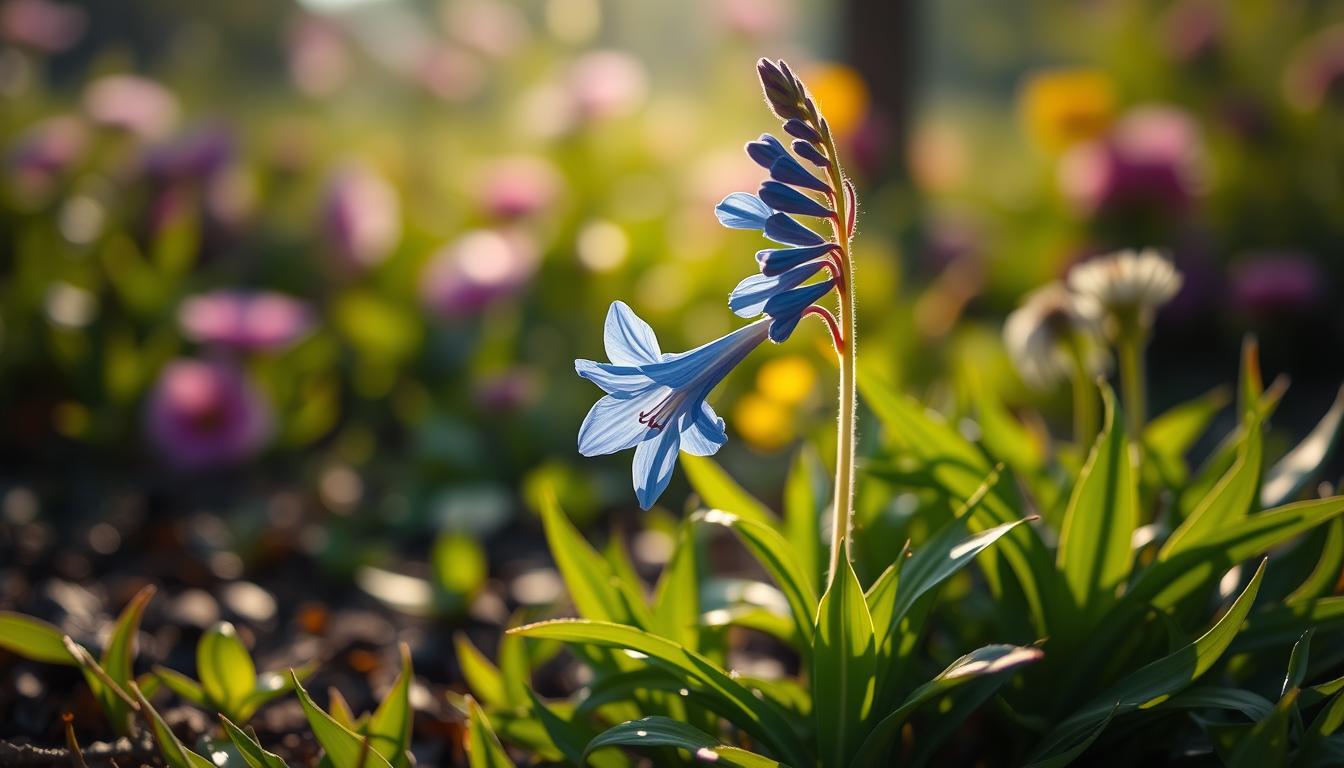How to Grow and Care for Marsh Mallow Plant
“The Earth laughs in flowers,” wrote Ralph Waldo Emerson. This poetic truth comes alive with Althaea officinalis, a plant that bridges ancient history and modern gardening. With velvety leaves and pale pink blooms, this perennial adds elegance and purpose to outdoor spaces.
For centuries, civilizations valued marshmallow for its dual roles. Egyptians crafted medicinal confections from its roots, while Romans embraced its soothing properties. Today, it thrives in USDA Zones 3-9, standing 4-6 feet tall with a striking presence in cottage gardens.
What makes this species exceptional? Its resilience and versatility. The plant serves as both a landscape highlight and a natural remedy, offering anti-inflammatory benefits. Unlike many ornamentals, it demands minimal upkeep once established.
This guide explores cultivation techniques that honor its legacy while adapting to contemporary needs. You’ll learn how to create ideal growing conditions, from soil preparation to seasonal care. Discover why gardeners nationwide are rediscovering this botanical treasure – a living connection to horticultural history.
Understanding the Marsh Mallow Plant
The velvety leaves of Althaea officinalis whisper tales from ancient apothecaries to modern gardens. This perennial thrives in damp soils across Central Asia and Western Europe, standing tall with silvery-green foliage and delicate pink blooms. Its membership in the Malvaceae family connects it to hibiscus and hollyhocks, sharing their showy floral displays.
Botanical Overview and Historical Uses
Early civilizations treasured this species for its versatile applications. Egyptian healers extracted mucilage from its roots to soothe sore throats, while Roman cooks crafted early versions of marshmallow treats using sap and honey. The plant’s edible flowers and leaves later became staples in European herbal medicine.
Unique Characteristics and Garden Appeal
Three features make this specimen stand out:
| Feature | Historical Use | Modern Value |
|---|---|---|
| Velvety Leaves | Wound dressings | Textural garden contrast |
| Mucilage-rich Roots | Confection base | Herbal remedies |
| Hibiscus-like Flowers | Decorative dyes | Pollinator magnets |
Contemporary gardeners prize its drought tolerance and vertical structure. The fuzzy foliage creates visual interest even when not in bloom, while summer flowers attract bees and butterflies. Unlike modern sweets bearing its name, the plant offers genuine nutritional benefits through its vitamin-rich leaves and stems.
How to Grow and Care for Marsh Mallow Plant

Unlocking the potential of marshmallow seeds requires understanding their natural rhythms. These botanical marvels evolved to thrive after winter’s chill, making artificial cold treatment essential for indoor propagation.
Seed Germination and Cold Stratification Techniques
Cold stratification mimics nature’s winter cycle. Place seeds in a sealed bag with damp sand or peat moss. Store at 35-40°F for 6-8 weeks. Check moisture weekly to prevent mold.
| Stratification Method | Duration | Success Rate |
|---|---|---|
| Refrigerator | 40-60 days | 85% |
| Winter Sowing | Natural season | 75% |
| Outdoor Exposure | Variable | 60% |
Indoor Starting and Hardening Off Procedures
Sow treated seeds ¼” deep in starter mix. Maintain 65-70°F temperatures under grow lights. Germination typically occurs within 14 days.
Begin hardening off when seedlings develop 3 true leaves. Gradually increase outdoor exposure over 7-10 days. Start with shaded morning hours, progressing to full sun.
Preparing the Garden: Site, Soil, and Sunlight Essentials

Optimal growth begins with strategic garden placement and soil preparation. Three elements work together: sunlight exposure, moisture control, and nutrient-rich earth. These factors determine whether your specimens become thriving showpieces or struggle through seasons.
Sunlight Meets Hydration Balance
Six hours of direct sunlight daily fuels flower production and stem strength. Morning sun proves ideal in hotter regions, preventing afternoon leaf scorch. Moist soil conditions mirror the plant’s native habitats near wetlands.
Consider these location factors:
| Site Feature | Benefit | Risk Avoided |
|---|---|---|
| Full sun exposure | Compact growth | Leggy stems |
| Natural slope | Water drainage | Root rot |
| Windbreak access | Stem protection | Breakage |
Earth Engineering for Success
Clay soils benefit most from amendments. Mix 3-4 inches of compost into planting areas to boost fertility. This creates a crumbly texture that retains moisture without waterlogging roots.
Pacific Northwest gardeners leverage natural rainfall patterns. Those in drier zones should install drip irrigation. “Organic matter acts like a sponge,” notes Oregon horticulturist Lila Chen. It stores water during dry spells while letting excess flow away.”
Space plants 3 feet apart to accommodate mature sizes. This prevents overcrowding and promotes air circulation – key for preventing fungal issues in humid climates.
Planting, Transplanting, and Propagation Methods

Successful cultivation begins with choosing the right multiplication strategy. Each technique offers distinct advantages depending on garden size and timeline.
Direct Sowing and Transplanting Tips
Fall-sown seeds leverage nature’s refrigeration. Scatter them ¼ inch deep after first frost, allowing winter chill to break dormancy. Spring planting works equally well in Zones 3-5 where ground freezes solid.
Space seedlings 24-30 inches apart during transplanting. This prevents overcrowding as specimens reach 4-6 feet tall. Wait until soil temperatures hit 60°F for spring moves – typically late April through May.
Division and Cutting Propagation Techniques
Established clumps respond best to division in early spring. Use a sharp spade to slice through woody roots, ensuring each section has 3-5 growth buds. Replant divisions immediately at original depth.
For cuttings, select 6-inch spring shoots. Remove lower leaves and dip in rooting hormone before planting in perlite mix. Maintain high humidity until new roots form – usually 4-6 weeks.
Maintenance Tips and Growing Season Care

Seasonal rhythms guide marshmallow care, balancing hydration needs with strategic pruning. Proper techniques ensure robust growth while preserving the plant’s natural resilience.
Watering and Nutrient Management
New specimens demand weekly watering until roots establish. Mature plants thrive with deep irrigation every 7-10 days. Check soil moisture by inserting a finger 2 inches deep – water when dry.
| Growth Stage | Water Frequency | Method |
|---|---|---|
| Seedlings | Every 3-5 days | Base watering |
| First Year | Weekly | Soaker hose |
| Mature | Biweekly | Deep irrigation |
Enrich soil with compost tea in early spring if growth slows. Avoid high-nitrogen formulas that promote leafy expansion over flower production.
Health Monitoring and Seasonal Pruning
Trim stems by one-third after first frost, leaving protective structure. Remove dead material in spring using sterilized shears. This encourages bushier growth and prevents disease.
Watch for yellow-spotted leaves indicating rust fungus. Improve airflow through selective branch removal. For flea beetles, apply neem oil at dusk to avoid harming pollinators.
Established specimens often thrive for 5-7 years with minimal intervention. Divide crowded clumps every 3 seasons to maintain vigor and prevent root competition.
Harvesting Marsh Mallow Roots and Unlocking Their Benefits

Patience rewards gardeners who wait for nature’s timeline. The real magic of this botanical wonder lies beneath the soil, where energy concentrates over seasons.
Timing Your Harvest and Handling Roots
Mature specimens require 24+ months to develop medicinal-quality roots. Target late October through November when foliage yellows. Use a digging fork to prevent damaging the taproot’s branching network.
| Root Form | Storage Method | Shelf Life |
|---|---|---|
| Fresh | Refrigerate in damp sand | 2 weeks |
| Dried | Airtight glass jars | 12 months |
Process roots immediately after digging. Scrub gently under cool water, then peel the brown outer layer. Slice into matchstick-sized pieces for quicker drying.
Culinary and Medicinal Uses of Marsh Mallow
Fresh root pieces thicken soups like okra while adding nutrients. For respiratory support, prepare tea using cold extraction:
- Steep 1 tbsp dried root in 8oz cold water
- Wait 90 minutes
- Warm gently (never boil)
- Strain and sip slowly
The mucilage content peaks in 3-year-old roots, creating a soothing gel when hydrated. Modern herbalists combine it with honey for cough syrups or infuse oils for skin salves.
Wrapping Up Your Marsh Mallow Journey
This botanical gem offers more than just visual appeal. Its velvety foliage and soft pink blooms create garden drama while serving practical purposes. From ancient apothecaries to modern herb gardens, Althaea officinalis remains a living testament to nature’s ingenuity.
Low-maintenance cultivation makes it ideal for both novice and expert gardeners. Once established, the plant thrives with minimal intervention. Seasonal beauty and harvestable roots reward those who understand its needs.
The dual-purpose nature – ornamental charm meets herbal utility – sets it apart. Well-draining soil enriched with organic matter supports robust growth. Strategic placement balances sunlight exposure with moisture control.
Nurturing these specimens connects modern horticulture to historical practices. Each bloom bridges aesthetics and functionality. Whether crafting remedies or enhancing borders, marsh mallow proves gardens can be both beautiful and purposeful.



